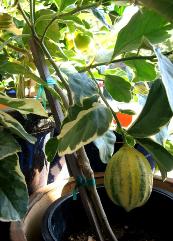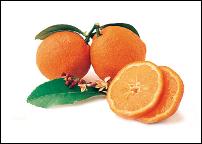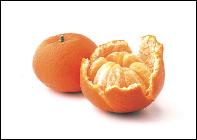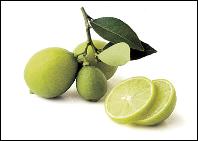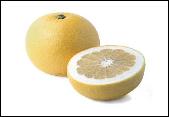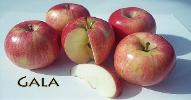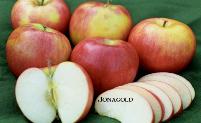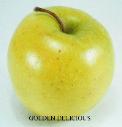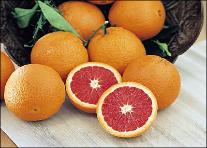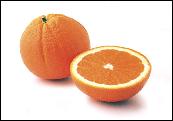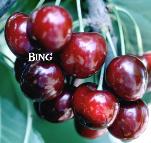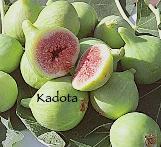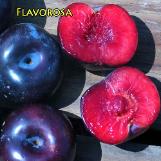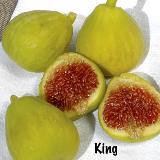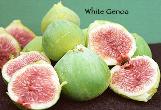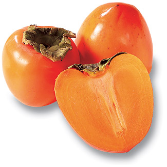The following is a list of fruit trees we usually stock. Please call or come in to verify
whether we have a specific variety of tree available. Also, we like to pick up unusual
specimens when available, so it's best to drop in.......
- Apricot - Moor Park Apricot
Long-time favorite of apricot fanciers for its exceptionally rich flavor and
aroma. Reliable producer. Used fresh and for canning. 600 hours. Self-
fruitful.
- Apples - Columnar Apples (need two different varieties for cross-pollination)
Scarlet Sentinel: Dense clusters of white blossoms followed by large,
delicious, red-blushed, greenish-yellow fruit. Attractive, distinctive, narrow-
growing (columnar) tree grows to about ten feet. Trees topped for height
control develop upright side limbs. Easily adapted to container growing.
Estimated chilling requirement 800 hours. Pollinated by North pole™ or
other apple varieties.
North pole: Large, red-skinned McIntosh-type fruit is crisp, juicy and
aromatic. Attractive, distinctive, narrow-growing (columnar) tree, grows to
about ten feet. Trees topped for height control develop upright side limbs.
Easily adapted to container growing. Estimated chilling requirement 800
hours. Pollinated by Scarlet Sentinel or other apple varieties.
Gala: Wonderful dessert apple from New Zealand. Crisp, nice blend of
sweetness and tartness, rich flavor. Skin reddish-orange over yellow.
Early harvest, 2-3 weeks before Red Delicious. Good pollen sizer for
other varieties. 5-600 hours. Self fruitful.
Fuji: Recent introduction from Japan that quickly became California's
favorite apple. Sweet, very crisp and flavorful, excellent keeper. Dull
reddish-orange skin, sometimes gusseted. Ripe mid-September. Excellent
pollen sizer for other apple varieties. Chilling requirement apparently less
than 600 hours. Self fruitful.
In winter, surprisingly sweet yellow fruit. Huge, intensely fragrant
flowers and dark green large foliage make an attractive tree.
Olive-shaped orange fruit ripen in winter. Eat small fruit whole for
sweet/tart sensation.
Sweeter and more round than Nagami. Both varieties grow best in
hot locations.
- Meyer (on espalier)
- Improved Dwarf Meyer
- Meyer
Most popular in home gardens, prolific bearer, juicy fruit is
slightly sweeter than other lemons with light, acidic flavor.
Often continuous harvest.
Distinctive green and yellow variegated foliage. Lemons
have pink flesh, clear juice and acidic lemon flavor. Fuchsia
colored new growth and flower buds. Excellent landscape
tree prized more for interesting variegated foliage than for
fruit quality and quantity.
Another major commercial variety. Upright, dense foliage,
thornier than Eureka, preferred in desert and inland.
California classic lemon with abundant crops of commercial
quality fruit .Prune tree to keep compact. Handsome
productive tree has fewer thorns than Lisbon.
Tart reddish orange fruit is used like lime, although it is a
sour Mandarin from India. The overlap of prolific fruit and
purple tinged blooms make this a wonderful ornamental tree.
Popular in mixed drinks or simply sliced for ice tea.
Authentic, aromatic leaf essential for Thai cooking; used in
soups, vegetables, curry,
Small, sometimes seedy fruit with genuine tropical flavor year-
round. Frost sensitive.
True lime of Tahiti type. Fruit larger than Mexican lime.
Good in cool areas. Year-round.
Also known as Japanese Citron. In the fall, this thorny tree
produces lumpy, medium-sized, yellow to orange fruits that
are uniquely fragrant and highly prized as flavoring agents in
Asian cuisine, and for marmalade. Trees are among the cold-
hardiest of all citrus.
Sweet, juicy fruit ripens a month after Satsuma, holding well
on the tree. Dense foliage.
Seedless fruit ripens Nov-Dec. Hardiest of all the
mandarins. Slow growing at first but worth the wait.
In Florida called 'Honey'. Flesh orange-colored. Tender,
very juicy, rich tangerine flavor. Spring ripening.
- Murcott FL Honey
- Calamondin
Prolific fruit production. Zesty acid juice. Handsome compact
habit and miniature fruit. Outstanding in containers and
bonsai. Hybrid between kumquat and mandarin.
Summer ripening fruit holds to the tree through the fall.
Grow your own orange juice!
Early-ripening Navel Orange with medium red colored flesh.
Fruit has rich sweet flavor. Venezuelan introduction.
California's famous winter-ripening variety. Sweet, seedless
fruit ripens in ten months.
Bestselling winter-ripening variety. Early and heavy bearing.
Cultivar of Washington Navel.
A vigorous large leafed tree with open growth habit. Produces large
pink-fleshed fruit which are somewhat larger than standard
grapefruit. Heavy producing in the right location, provided sufficient
summer heat and frost protection.
Deep reddish-orange colored fruit in winter. Leave fruit on tree for
rich tangerine-like flavor in late spring through summer.
Often found on fruit stands at Christmas time. Heavily laden trees
are popular for Chinese New Year.
Large, firm, juicy, sweet, nearly black when ripe -- superb flavor,
the No.1 cherry. Mid-season. Large vigorous tree. Pollinated by
Black Tartarian, Van, Rainier. Also Stella in colder climates. 700
hours.
- English Morello Sour Cherry
Late-ripening tart cherry for cooking, sometimes eaten fresh when
fully ripe. Dark red to nearly black fruit with dark juice. Small, round-
headed tree with drooping branches (easy to harvest). European
origins obscure, introduced to America prior to 1862. 700 hours.
Self-fruitful.
- Espalier style grafted with Bing, Stell, Corum, and Black Tartarian
Large, light greenish-yellow 'white' skin, amber flesh. Long-lived,vigorous.
Prune to any shape. Very sweet fruit needs hot weather to ripen.
Fresh/dry/can. 100 hours. Self-fruitful.
- King Fig - Light green 'white' skin, strawberry colored pulp. Rich flavor,
excellent fresh-eating quality. Large breba (spring) crop. Later crop is
light in hot climates, heavier in coastal climates. Prune only lightly,
occasionally. (Heavy winter pruning removes breba crop.) 100 hours. Self-
fruitful.
Sweet, juicy, early season white freestone. Late June harvest in
Central CA., 2-3 weeks ahead of Babcock peach. Estimated
chilling: 250-300 hours. Self-fruitful.
Sprightly-sweet, early season white-fleshed nectarine. High scores
in taste tests: nice balance of sugar and acid, very appealing
flavor. Highly recommended for home orchards. Late June/early
July in central CA. 6-700 hours. Self-fruitful. Pat. No. 7884. (Zaiger)
- Persimmon - Hachiya Persimmon
Juicy, sweet, refreshing, crisp like an apple. Easy to grow. Keeps well.
Harvest late July/early August in Central Calif. Bright yellow skin.
Vigorous, heavy bearing (usually by 2nd year). 350-450 hours. Self-
fruitful.
-Fuyu Persimmon
Taste test winner. Unique plum-apricot hybrid. Remarkable, spicy
bouquet and flavor. Reddish-purple skin, sweet red flesh. Harvest
mid August in Central Calif. Naturally small tree. 5-600 hours.
Pollenized by Flavor Supreme, Santa Rosa or Late Santa Rosa.
Pat. No. 8026.(Zaiger)
Deep purple-skinned fruit with red flesh. Mild, sweet flavor. Ripens
at the end of May. Pollinate with Japanese plum. 400 hours chill
required. Patent # 10285 (Zaiger)
Most popular plum in California & Arizona. Juicy, tangy, flavorful.
Reddish-purple skin, amber flesh tinged red. Late June in Central
Calif. 300 hours. Self-fruitful.
Large, dark blue skin. Juicy, sweet, delicious, greenish-yellow
meaty flesh, freestone. Late summer harvest. Late blooming,
extremely cold hardy and reliable. 800 hours. Self-fruitful.
Kiwi vines- we have male/female kiwi vine combos in the same pot. Many
growers have stopped selling them individually and now combine them in the same pot.
- Misc blueberries (call for varieties)
- Gooseberries and White Currants
- Sochi Tea shrubs
- Pomegranates
|

